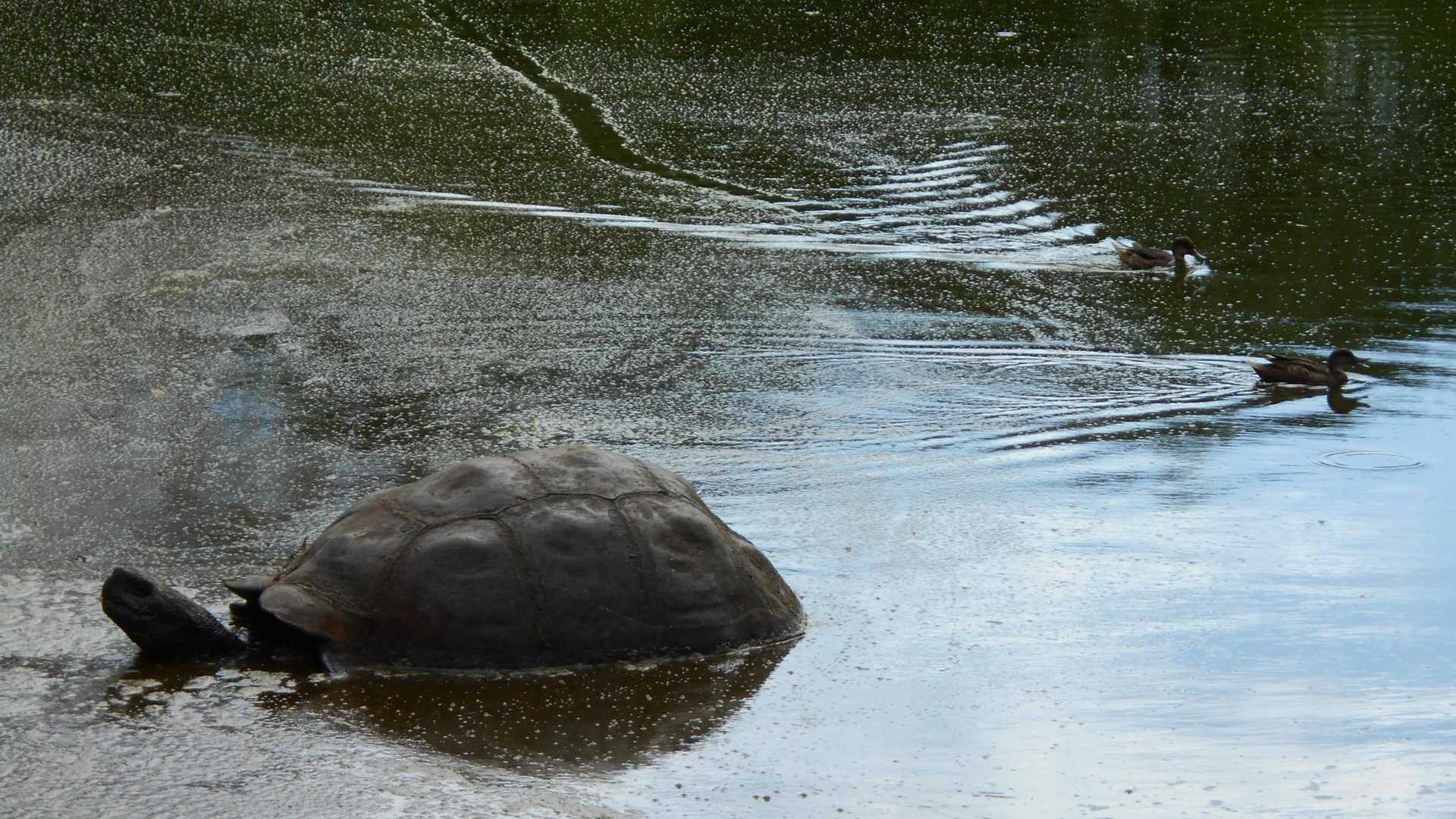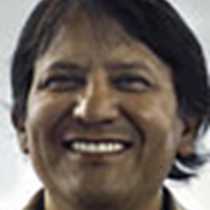Today, we disembarked at Puerto Ayora on our way to the Charles Darwin Research Station, where we visited the giant tortoise rearing center situated among centenary giant cacti, some of them 30’ tall.
Along a beautiful wooden boardwalk, we saw baby tortoises sheltered in corrals. We also encountered giant tortoises of different sizes and shapes, including “saddle backs,” named because their shells resemble a horse saddle. The Spaniards called them “galapago,” which became the name of the archipelago. Other tortoises had shells that look like domes or rounded “camping tents.” Some can weigh 500 pounds or more. Overall, we saw about one hundred tortoises from five different islands of the Galapagos.
We also paid our respects to Lonesome George, the last of the Pinta species who died in 2012. After undergoing a careful taxidermy process in New York, he is now displayed behind glass at the Giant Tortoise Rearing Center.
Later on, at Puerto Ayora’s fishing dock, we observed local fishermen with their daily catch. We also sea lions, pelicans, and frigatebirds trying to get a piece of a fish being cleaned and sold to shoppers. Afterward, we headed to the town of Bellavista to visit a lava tube and a sugar cane farm as well. We learned traditional methods of making “melaza,” or brown sugar syrup, and “agua ardiente,” a strong type of alcohol. We also saw how coffee and cocoa beans are processed, and we sampled a very tasty cold sugar cane juice that had a tiny bit of buzz.
After a wonderful lunch at a local farm, we walked for about an hour and saw many giant tortoises of different sizes in the wild. These magnificent creatures wandered around a pond and along forested trails on Santa Cruz, where they have lived peacefully for many years.
At the end of the day, we enjoyed cocktails on board our vessel, watching a very nice sunset amid a calm sea in the company of artists from the island of Santa Cruz.







